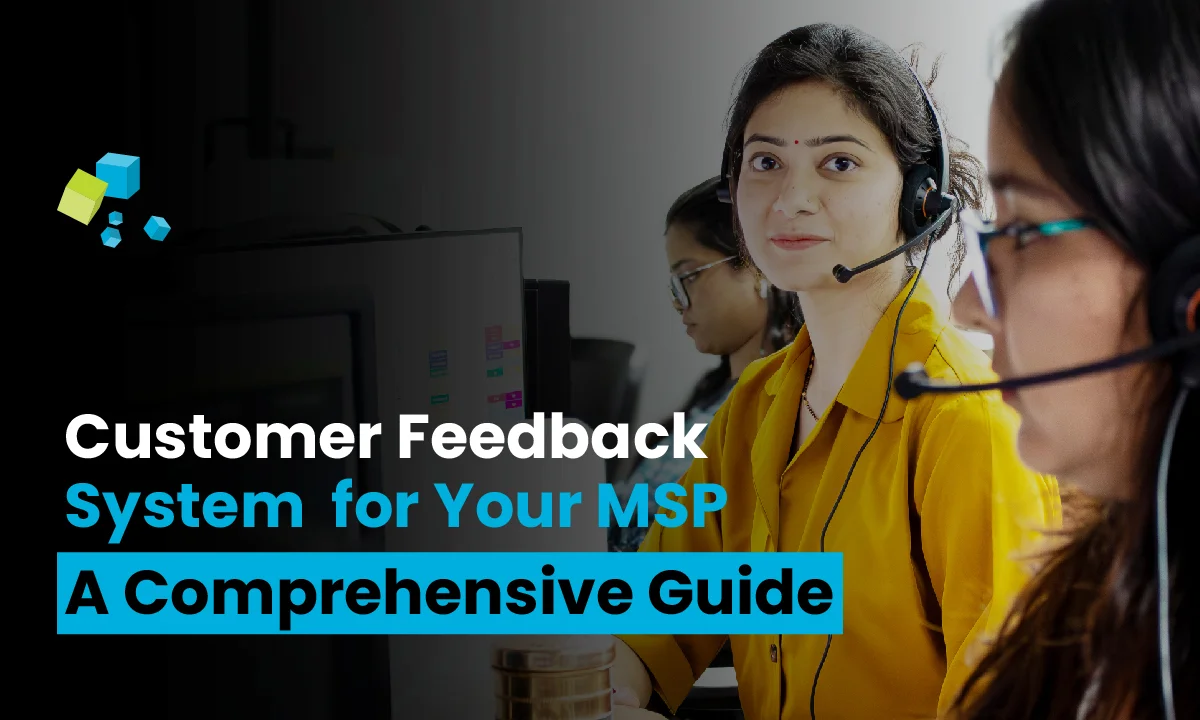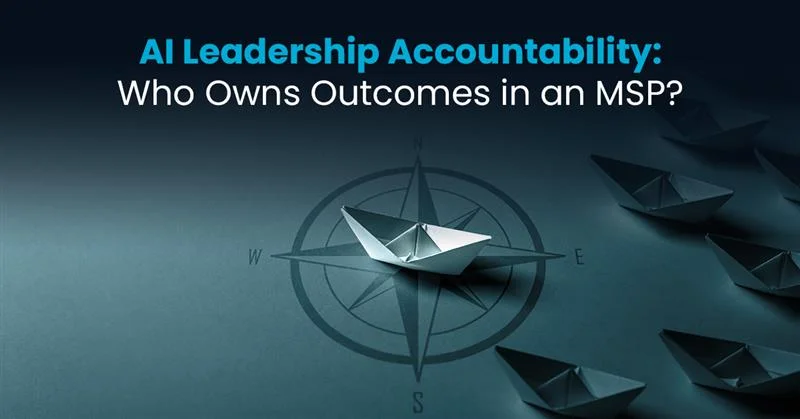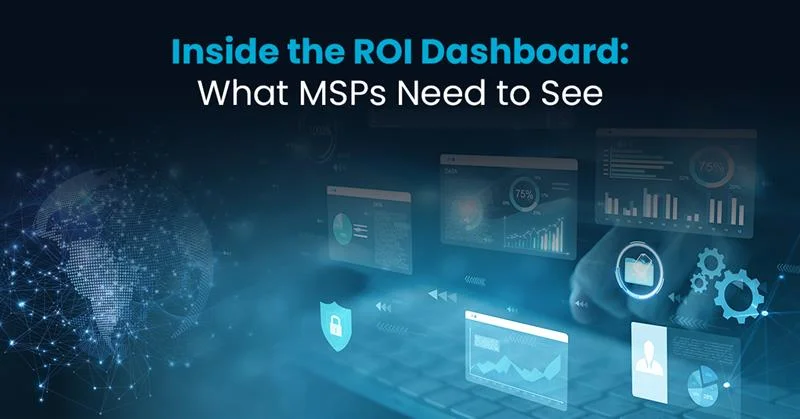You must continually evolve to meet the growing and changing needs of your customers. One of the most powerful ways of doing it is by using a well-structured customer feedback system. Such a system not only helps in identifying areas for improvement but also fosters stronger customers relationships, enhances service quality and drives business growth.
In this comprehensive blog, we will delve into the essentials of building and maintaining an effective customer feedback system for your MSP.
Definition of a customer feedback system
A customer feedback system serves as the voice of your customers, offering invaluable insights into their experiences and expectations. It enables you to gauge satisfaction, understand pain points, and capture suggestions directly from those who matter most—your customers.
By effectively collecting, analyzing, and acting on this feedback, your MSP can make informed decisions that lead to enhanced service delivery and increased customer loyalty.
Understanding the need for customer feedback
Given the stiff competition in the MSP channel, your MSP must always be a step ahead of competition by mastering customer-focused service delivery. Here are the key reasons why customer feedback can help you in the process:
Service improvement
Identifying weaknesses: Feedback helps you identify areas where your services may be lacking or could be improved. Your customers provide firsthand accounts of their experiences, highlighting specific pain points that might not be evident internally.
Enhancing strengths: Positive feedback highlights what your customers appreciate, allowing you to strengthen these aspects further and ensure you continue to meet your customers’ expectations.
Customer retention and satisfaction
Building trust: Regularly seeking and acting on feedback shows customers that their opinions are valued, and that you are committed to meeting their needs. This builds trust and fosters long-term relationships.
Personalized service: Understanding your customers’ preferences and experiences enables you to tailor your services to better suit individual customers’ needs, enhancing overall satisfaction.
Innovation and development
New service ideas: Customers often suggest improvements or new features that can inspire innovation. Feedback can reveal unmet needs or emerging trends that you can address by developing new services or refining existing ones.
Staying competitive: By continually evolving based on your customer insights, you can stay ahead of your competitors who may not be fully aware of their customers’ needs.
Performance metrics and accountability
Measuring success: Feedback provides quantifiable data which you can use to measure the effectiveness of your services. Metrics such as net promoter score (NPS) or customer satisfaction scores (CSAT) give an overview of how happy your customers are with your services.
Accountability: Regular feedback ensures that you remain accountable to your customers. It helps in setting your benchmarks and goals, tracking progress and ensuring that your MSP consistently meets its commitments.
Proactive problem resolution
Early issue detection: By regularly collecting feedback, you can detect issues early before they escalate into significant problems. This proactive approach reduces your downtime and increases service reliability.
Continuous improvement: A feedback loop encourages continuous improvement of your MSP. Regularly reviewing and addressing feedback helps you refine your processes, enhance service quality and maintain your high standards.
How to implement the feedback system
Implementing a customer feedback system for your MSP business involves several critical steps. Here’s a step-by-step guide on how to effectively establish feedback system:
- Define Objectives and KPIs
- Set clear goals: Determine what you want to achieve (e.g., improving service quality, enhancing customer satisfaction).
- Establish KPIs: To measure success you can use metrics like response rates, CSAT scores and NPS.
- Choose the right feedback tools
- Select appropriate tools: Utilize surveys, feedback forms, CRM systems and dedicated feedback software.
- Ensure integration: Choose tools that integrate seamlessly with your existing IT infrastructure.
- Design user-friendly feedback forms
- Simplicity and clarity: Create straightforward and relevant forms with a mix of open-ended questions and rating scales.
- Accessibility: Make forms accessible through multiple channels such as email, your website and service tickets.
- Train your employee
- Educate on importance: Train employees on the importance of feedback and how to encourage it.
- Tool usage and interpretation: Ensure employees know how to use feedback tools and interpret data.
- Collect feedback consistently
- Ongoing process: Implement regular feedback collection at various touchpoints (post-interaction, project completion).
- Automated reminders: Use automated systems to remind customers to provide feedback.
- Analyze and interpret feedback
- Use analytics tools: Analyze feedback to identify trends, recurring issues, and areas for improvement.
- Categorize feedback: Organize feedback into themes for targeted action.
- Act on feedback
- Prioritize issues: Focus on the most impactful and urgent issues.
- Develop action plans: Create and implement plans to address feedback.
- Communication changes: Inform customers about the improvements made based on their feedback, enhancing trust and satisfaction.
How Team GPS can help you build stronger customer relationships
Team GPS helps you significantly enhance your customer relationships by letting you build custom feedback collection surveys and use the data to improve service quality and foster long-term customer loyalty.
With Team GPS, you can:
- Build custom surveys to record CSAT, NPS and customer effort score (CES).
- Track survey insights on an intuitive dashboard.
- Connect insights with individual scorecards to recognize top-performing engineers.
- Review alignment of scores with organizational goals and adjust your strategy accordingly.
- Associate customer feedback with engineer performance and use insights to guide them better during 1:1 meeting.
- And do much more.
Schedule a conversation today to learn how you can record the right customer feedback data and leverage it for long-lasting customer relationships.








